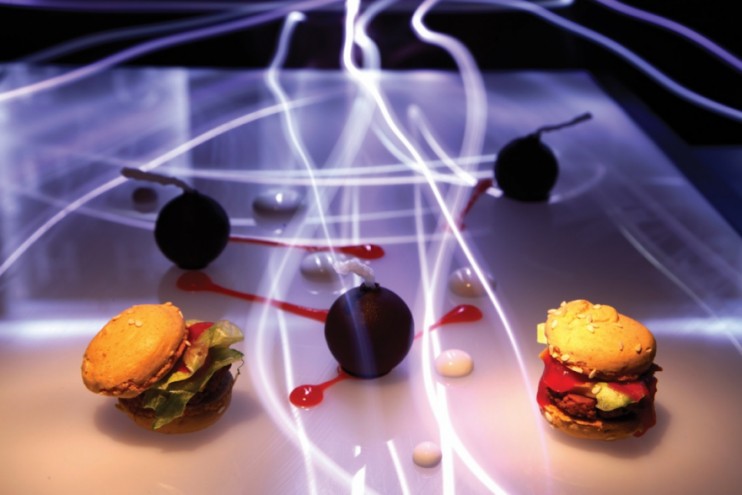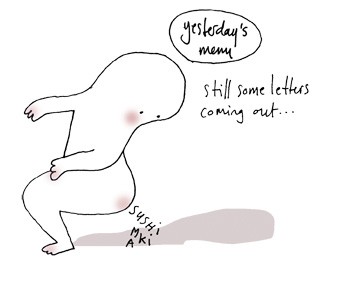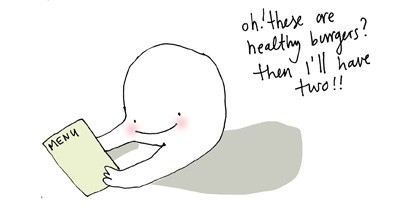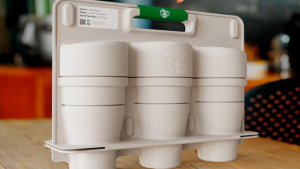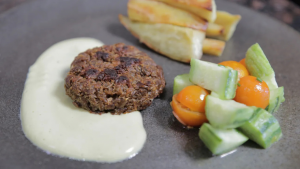First Published in
Many of us have fond memories of the food we ate as children. Sweet foods were sweet because of natural sugars and flavours exploded in our mouths because of Mother Nature’s touch. These days, it takes a lot to impress our world-weary palates, which have become hardened to anything less than junk food levels of sugar and fat.
Rather than changing what people like, Homaro Cantu and Ben Roche have spent years developing unusual cooking techniques to replicate food everyone loves with healthier substitutes and mind-twisting flavour experiences.
After graduating from Le Cordon Bleu Culinary Institute in Portland, Oregon, and then being fired from Chicago’s Charlie Trotter in late 2003, Cantu was approached to open a sushi restaurant under the name Moto. Knowing that sushi wasn’t what he wanted to do, he convinced his benefactors to let him experiment by cooking for them.
It didn’t take much and in January 2004, Moto went from a sushi restaurant to part-kitchen part-science-lab and an entirely new gastronomic experience. As an insider’s joke, they still do serve sushi – well, a “this is not a pipe” surreal type of sushi at least. After printing out a picture of maki rolls on edible paper, Cantu infuses it with the flavours of a real maki roll and serves it with chopsticks.
While working at Charlie Trotter, Cantu met Roche, a young pastry chef with a mind much like his own. Having bonded over their love of innovative cooking, Cantu hired Roche in June 2004.
“While I’m a pastry chef, I’m also one of the leaders in the creative department,” Roche explains while on the phone at Moto. “Every week we try to come up with new ideas to take an element of something or a dish, and change it to get people to re-engage with the food they eat.”
One of their signature dishes is the nachos dessert. The dish consists of candied chips, chocolate made to look like beef and slivers of mango frozen in liquid nitrogen as a cheese topping. While your eyes see nachos and are ready to experience the creamy cheese and tangy salsa, your taste buds are blown away by the sudden sweet sensations, allowing you to experience the flavours in a more intense and explosive manner.
Do they enjoy seeing people’s reactions? “We don’t stand behind the curtain and laugh at people,” the exuberant young chef chuckles. “We create dishes we would want to experience and messing with the diner’s head comes later. Ideas stem from what we want to see happen and then steering it in a direction that makes sense.”
In the Moto kitchen you would think that you were stepping into a laboratory rather than a restaurant kitchen, but having gadgets such as a Class IV laser in a kitchen is necessary when finding creative ways to pair wine and food.
“We wanted to find out how far we could take food and wine pairing. By taking orange-flavoured paper and vaporising it into a wine glass using the laser, the mixture of the wine with the vapour in the glass intensifies the taste of the wine,” Cantu breaks it down with the intonations of a mad scientist.
But for Cantu, all the fun is entrenched with a serious need to create healthier ways of eating and forward-thinking green products. Diners should also expect to eat their menu once they’re done ordering their meal. The Moto menu is printed on edible paper that is continually changing flavour, anything from a burger and chips to gourmet paninis.
“Every year, 20 tons of paper is wasted by restaurants alone. By getting people to eat their menus, we have found a way to not only reduce waste, but a sustainable way to save paper and for diners to have an interesting experience,” Cantu enthuses.
As founder of Cantu Designs, a firm specialising in highly innovative patent-pending food technology, Cantu has been working for a number of years either using existing methods in science or developing completely new techniques to help people not only eat better, but still eat the same foods they’ve always loved.
“Burgers, fries and cola inspire me because these are the foods I loved as a child, but how do I give myself that fix now without clogging up my body?” he asks quite pointedly.
He may have found the answer after six years of in-depth research into the miracle berry. This small red berry found in Africa has the ability to sweeten sour foods, without the aid of any refined sugars. The oldest mention of the berry is in 1725 by a French explorer, Chevalier des Marchais, in West Africa. He came across a tribe that ate not only the food they farmed, but also vegetation around them, anything from grass and hay to leaves that had fallen from trees. They would eat this little red berry and then help themselves to just about anything they could find around them. At the time, they were the only tribe in West Africa that didn’t have a famine problem.
Cantu realised the contemporary potential of the berry when he was asked to help a cancer patient going through chemotherapy to eat again. “Since the patient could only taste things that were metallic and rubbery, they had lost their appetite. I had them eat a miracle berry tablet and for an hour afterwards, the patient ate their first meal in six years because they could taste the flavours again,” Cantu describes.
Since helping that one cancer patient, over the past six years Cantu has helped a little over 10 000 people in regaining their taste of flavours, giving them back their appetites and helping them fight for their lives.
Cancer patients aren’t the only ones to benefit from this little fruit. By eliminating the need to add refined sugar to foods, the berry effectively removes sugar from the human diet, helping with weight loss and healthy eating while still eating sweet.
This berry also has the potential to be part of the solution in fighting global hunger for the almost 1 billion people who suffer from it every year. With the ability to make any vegetation edible, hunger could be eradicated if people could use whatever’s around them as sustenance. Accessibility is key to making this happen and Cantu is in the process of manufacturing an inhalable form of the miracle berry, reducing the cost of it to under the price of sugar.
Continually striving to push boundaries in the cooking world, there are many projects under way that have Cantu and Roche excited. Still hush-hush at the moment, Cantu hints to an oven the size of your palm that can heat up to 500°C but is cool to the touch, and something else he likes to call "green disruptive cooking technology".

